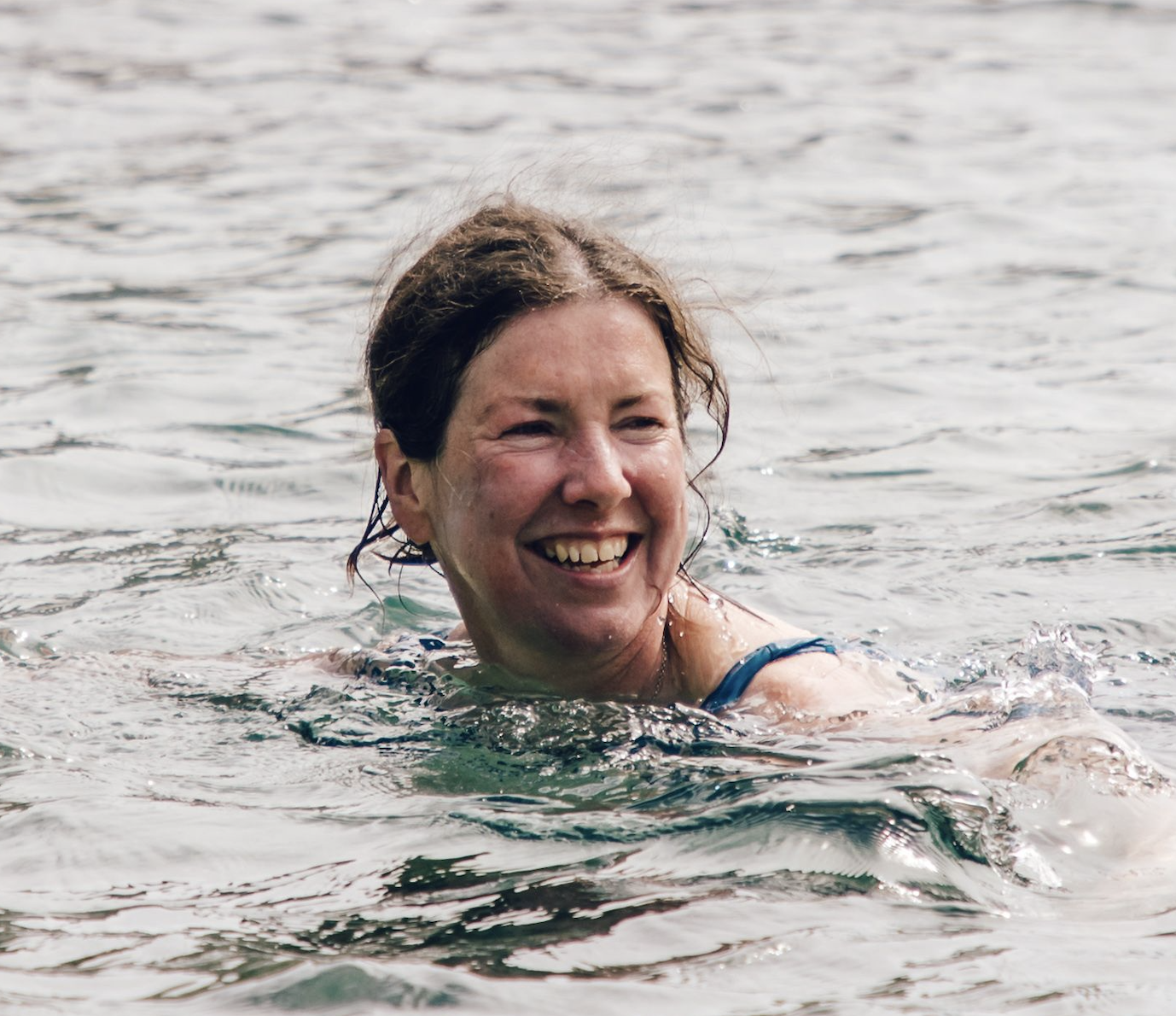Bosherston Lily Ponds, or Llynnoedd Bosherston, are special, forming one of very few hard-water mesotrophic lakes in Wales. They are spring-fed, so lucid, but artificial – created in the 1780s by the Cawdors of Stackpole (Stagbwll), and testament to that era’s zest for water features.
Weirs were built across three adjacent valleys to slow the water’s flow to the sea, and the resultant ponds stocked with lilies and fish. But it is the underlying limestone, responsible for the concentration of calcium carbonate, that encourages the growth of the stoneworts that are sensitive to nutrient enrichment. The combination of natural ecology and human intervention has resulted in a biodiverse site (12 species of bat, 40 species of dragonfly, 30 species of butterfly) that requires continued stewardship.
There are few benches on this circular route, the path is narrow, and the wooded valleys steep, so lingering on busy days is ill-advised. Choose a quiet time, then walk very slowly, for maximum immersion.
Being both popular and environmentally sensitive, Bosherston Lily Ponds in the western extremity of Pembrokeshire (Sir Benfro) is one place that deserves careful and imaginative planning to visit.
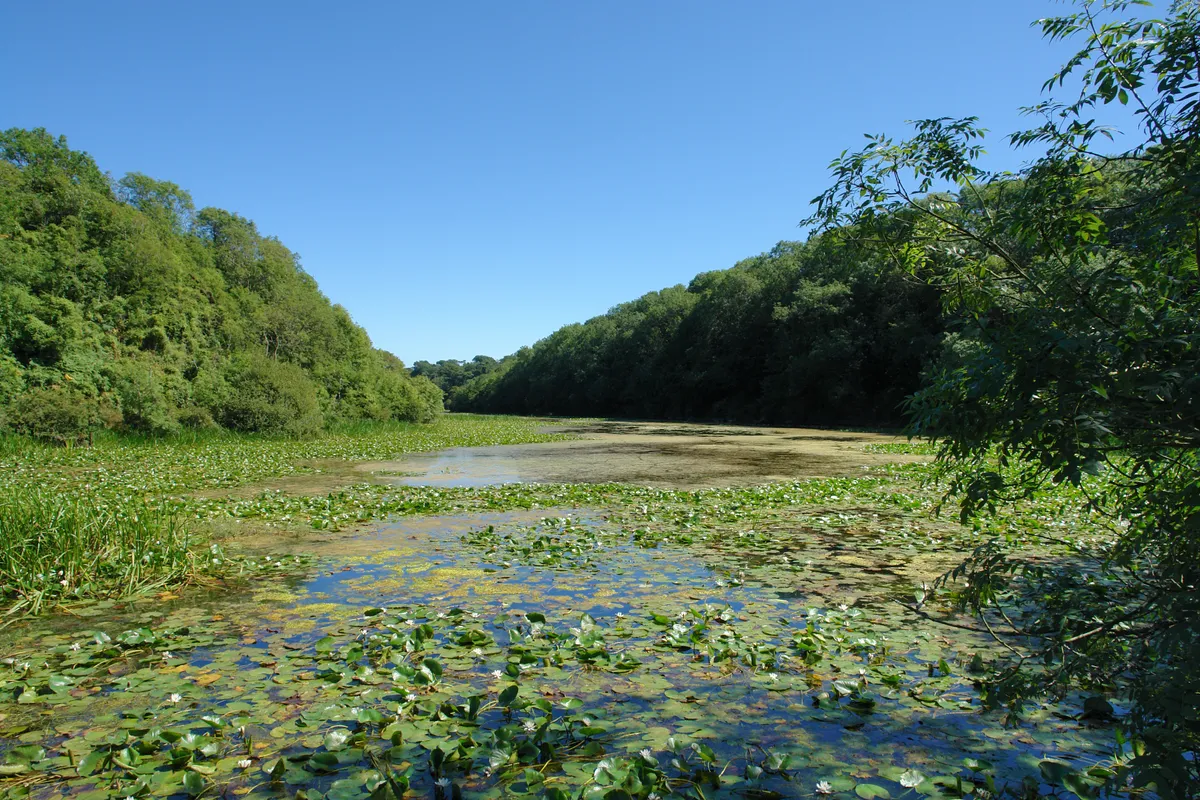
Reaching Bosherston by bus
The narrow lanes of Pembrokeshire were not made for modern traffic – especially not the density seen in the summers of 2020 and 2021. Try the Coastal Cruiser shuttle bus; it runs seven days a week in summer and departs from Pembroke Dock (Doc Penfro) railway station, cheerfully chauffeured by Gordon, an expert on itineraries and birdlife.
If driving is essential, park at either Castle Dock Woods (Coedwig Castell Dock) or Stackpole Court (Cwrt Stagbwll ) to avoid choking lanes to the car parks at the lakes, Broad Haven South (De Broad Haven) and Stackpole Quay (Cei Stagbwll), which are often full by 9am.
Bosherston Lily Ponds walk
3.7 miles/6km | 2.5 hours | easy
1. Alive with lilies
There are several access points to this short walk, but the Coastal Cruiser drops you at Bosherston where there is a Norman church, St Govan’s Inn, and Ye Olde Worlde Café.
Arrive at the western arm of the lake. The broadleaf wooded valleys sustain great spotted woodpeckers and treecreepers, while ducks populate the water, which the enchanting sunken bridge invites you to cross.
Climb to the viewpoint for an Arcadian view of the lily-gilded ponds in their green-cloaked valleys, tapering to the dunes and the coast.
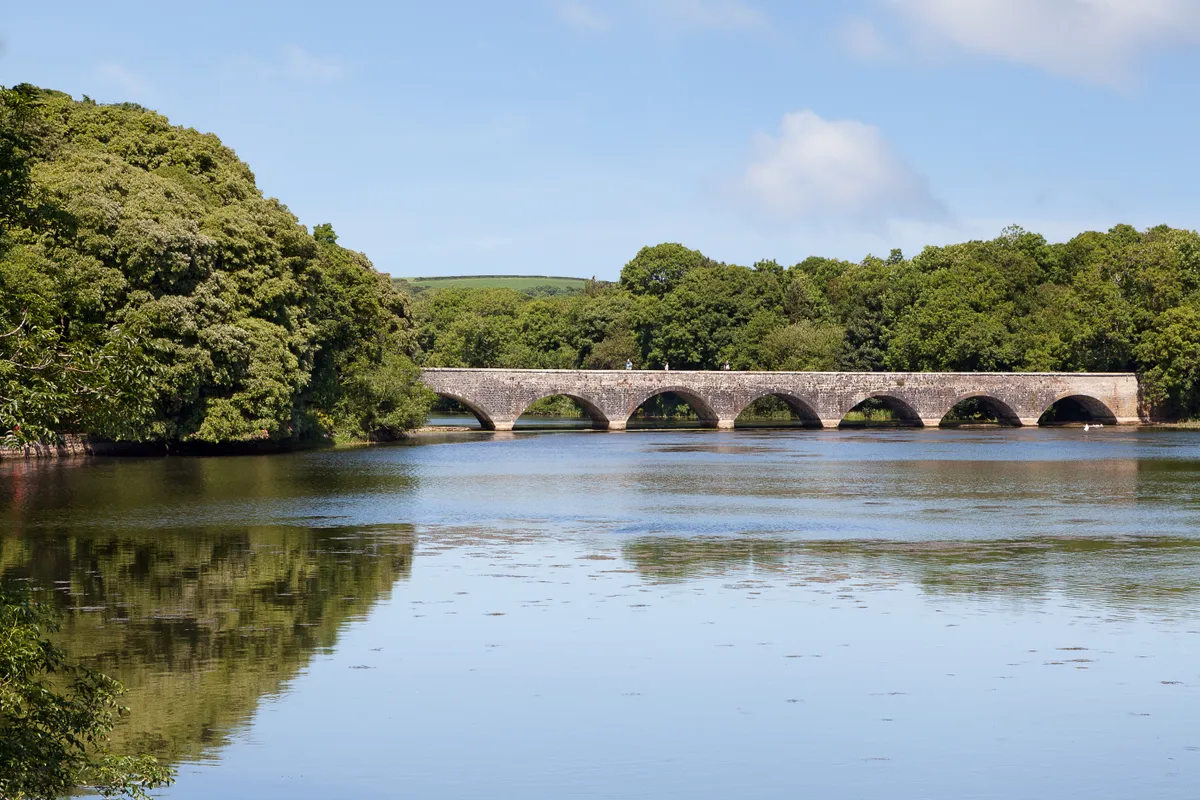
2. Stonewort surprise
A second sunken bridge takes you across the central arm, containing probably the best example of a stonewort meadow in Wales. Lesser bearded stonewort, Baltic stonewort, starry stonewort, and rugged stonewort all survive, so far avoiding nitrogen enrichment from agricultural run-off and subsequent deoxygenation and algal blooms.
3. Willow wetland
The eastern arm is the longest and least busy. Take the higher path betwixt woodland and fields, and descend to Eight Arch Bridge, built in 1797 over a weir.
Prior to the National Trust taking over, settlement pools that supplied the eastern arm were neglected and the silt not removed. Consequently, the upper eastern arm is now also silt-swamped – no longer pond but wetland dominated by willow and reeds. Nevertheless, the boathouse bird hide is a good place to see kingfishers.
4. Woodland ruin
Detour to Coedwig Lodge Park (Lodge Park Wood) and Cwrt Stagpwll (Stackpole Court) to appreciate the restorative qualities of woodland, and the decaying elegance of the old estate; the manor house was demolished long ago. Return along the eastern arm by the water’s edge.
5. Otter spotter
Cross the land-bridge at the central basin. This is where I encounter Chris, who has been fishing the ponds for 50 years. “I sometimes see an otter under the willow here,” he tells me, “on its back knocking at a freshwater mussel.”
6. Coastal haven
Circumnavigate the central basin to the sand dune ridge that separates the ponds from Broad Haven South (De Broad Haven). Emergent reeds grow extensively here in the littoral sands. At spring tides and drought, the sea is very occasionally higher than the ponds. Rising sea-levels mean the ponds’ freshwater status is finite – another reminder that these ponds are as environmentally fragile as they are beautiful.
Return along the south edge of the ponds to Bosherston.
Bosherston Lily Ponds map
Bosherston Lily Ponds walking route and map
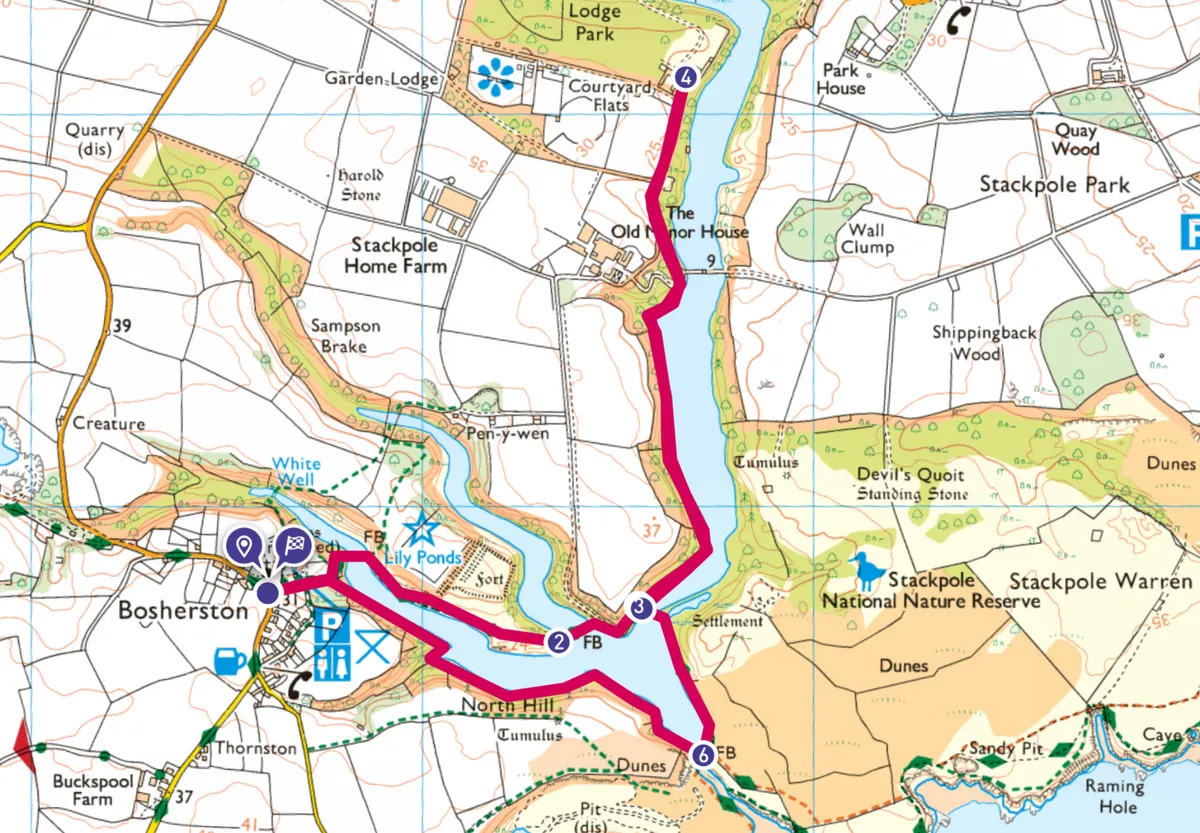
Wildlife at Bosherston Lily Ponds
Otter
Your best chance of seeing an otter is at night, dawn or dusk. Perhaps you will smell them or hear them whistling to each other before they come into view. Otters breed at any time of year. Look out for them frolicking, or feeding on fish, frogs or freshwater pearl mussels.
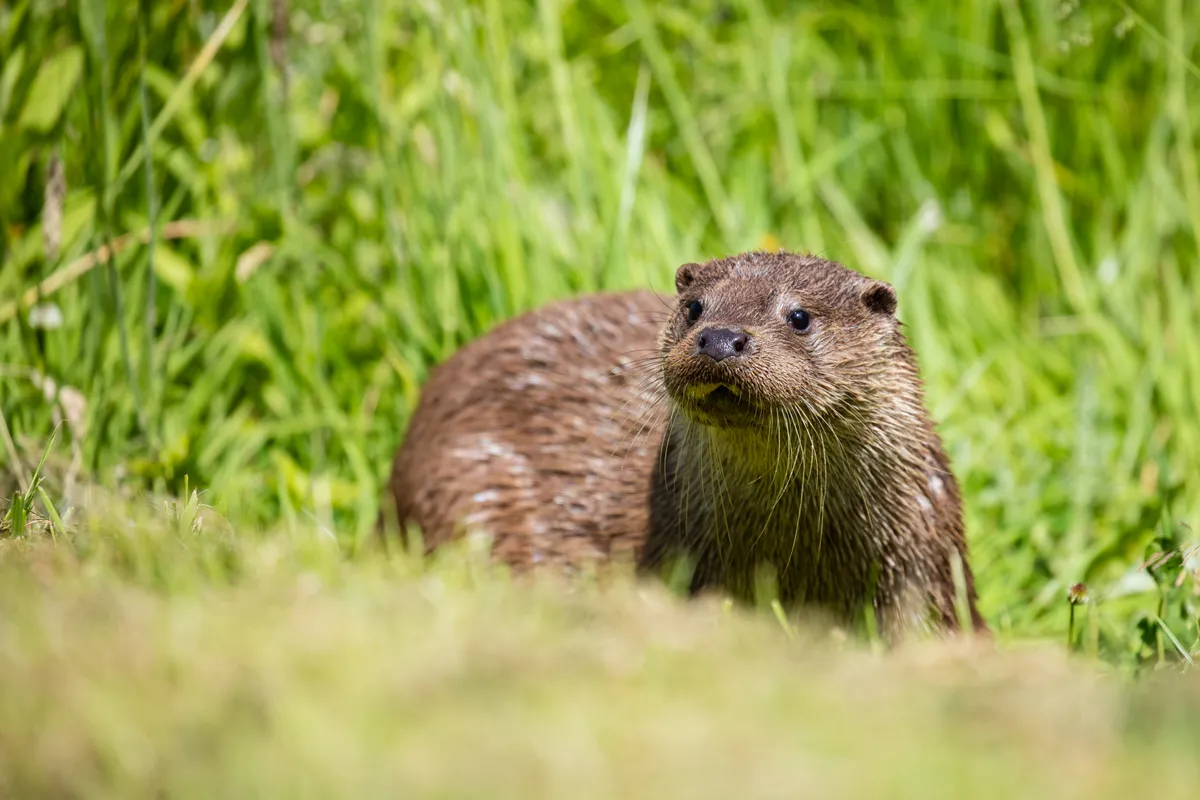
White Water Lily
Tethered to the lake bed, the leaves and white blooms (which flower in June) float, providing shelter for frogs and nectar for insects.
Great spotted woodpecker
These blackbird-sized birds can be heard ‘drumming’ in spring. Look for their red, white and black plumage as they ‘bounce’ through the air and cling to trees.
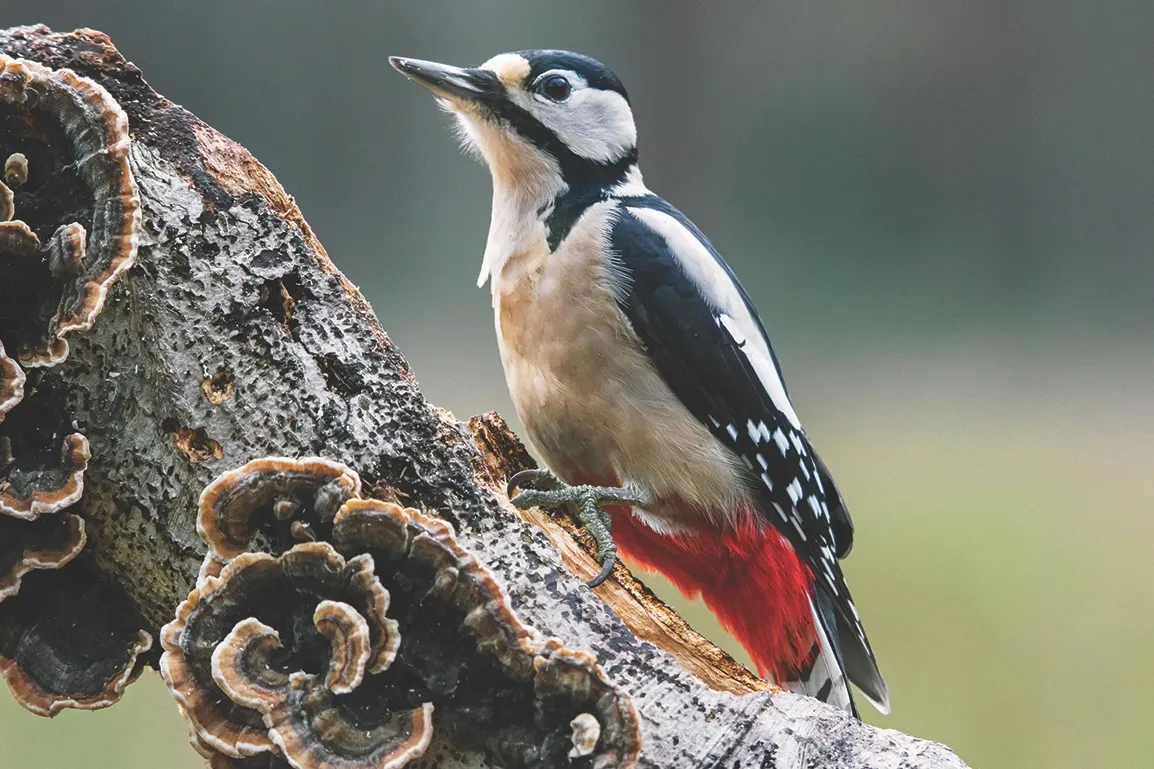
Hairy Dragonfly
Britain’s smallest hairiest hawker emerges early, in April or May. The male has blue spots, while the female has yellow ones.
Greater Horseshoe Bat
It comes out to feed at dusk and dawn. In May the females form maternity colonies and each gives birth to a single pup.
